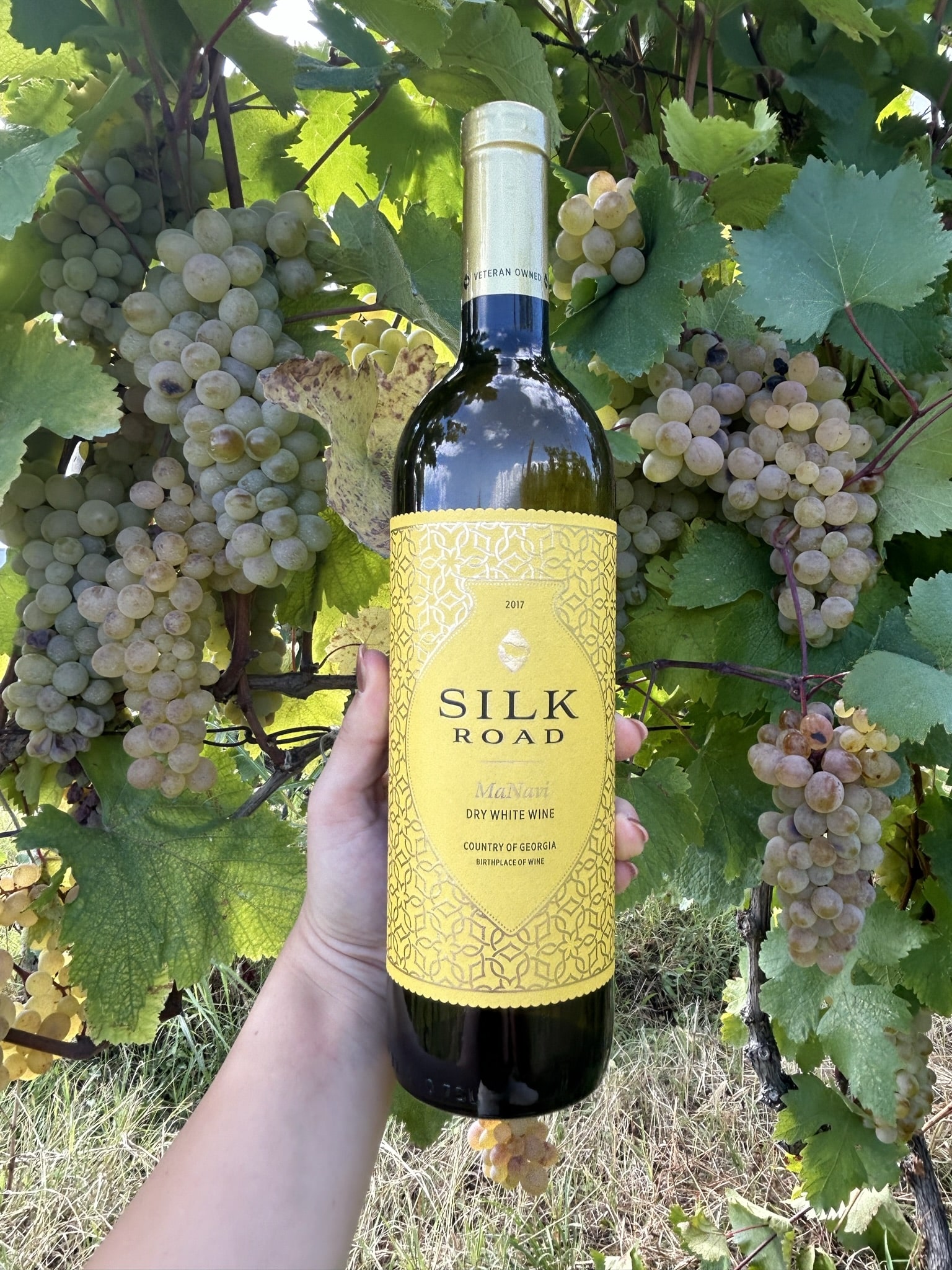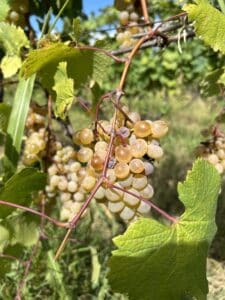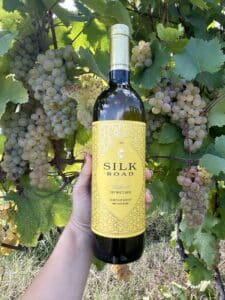
3 Popular Questions about Georgian Wines – Answered
Exploring the Special Elements That Make Georgian Wines Exceptional
Nestled between the soaring Caucasus Mountains and the shimmering waters of the Black Sea lies a land where winemaking isn’t just a tradition—it’s a living history that dates back an astonishing 8,000 years. Welcome to Georgia, the “cradle of wine,” where the vine is not merely a plant but a revered part of the cultural fabric. Through the country’s turbulent history, wine has remained a constant. Century after century, wine culture has been reinforced through Georgian customs and traditions. Georgia’s ancient winemaking tradition, passed down through countless generations, gives rise to a rich tapestry of flavors, textures, and aromas, all shaped by its indigenous grape varieties.
As we navigate through the Georgian wine landscape, we will delve into three intriguing questions to unravel the mystique of Georgian wines. We’ll explore the Qvevri winemaking tradition, savor Georgia’s diverse flavor spectrum and investigate how grape varieties like Saperavi, Rkatsiteli, and Mtsvane impart their character to create wines as rich in history as they are in complexity.
Question 1: What makes Georgian wine unique or different from other wines globally?
Winemaking in Georgia is an ancient tradition that predates recorded history. At the core of Georgian winemaking, there are two critical components which separate Georgian wines from any other region in the world:
- The Qvevri (or Kvevri)
- Indigenous Grapes
Qvevris are large, earthenware vessels which come in various types and styles, each contributing to the diversity of Georgian wines. Some are lined with beeswax, adding a subtle layer of complexity, while others are left unlined, allowing for a more direct interaction between the wine and the clay. This diversity in Qvevri styles offers winemakers a broad spectrum to craft wines with distinct characteristics.
The storied qvevri method of winemaking, combined with the diversity of indigenous grapes in Georgia, creates a fantastic medium for producing wines with unique character. Although Georgian grapes like the rich red Saperavi and the bright white Rkatsiteli have started to be cultivated in vineyards worldwide, Georgia is home to over 500 varieties of grape. Each of these varieties contributes intense and distinct flavors to the wines produced in the country, reflecting the rich viticultural heritage of the region.
For many millennia Georgian wines were known solely for their qvevri production method, but in the 19th century Prince Alexander Chavchavadze helped introduce modern winemaking practices at-scale in the country. During the Soviet era in the 20th century, qvevri-free winemaking rose in popularity, due to the ability to produce more consistent wine on a tighter schedule. This increase in production led to high availability of wine from the area, popularizing Georgian wine from beyond the qvevri and shifting the focus to the incredible diversity of indigenous grapes.
Though still representing a notable percentage of Georgian wines, Qvevri wines are less consistent and require more finesse to produce than wine made in more modern methods, leading many winemakers to rely on the European style of winemaking to produce the majority of their wines for market.
Learn more about contemporary Georgian winemaking styles in: All About Modern Georgian Winemaking.
Question 2: What kind of grapes are used in Georgian wines, and how do they influence the wine’s character?
Georgia has at least 430 indigenous grape varieties, but until recently, commercial production was concentrated on only a handful of varieties. More recently, the country has intensified their desire to resurrect its diverse natural heritage, leading producers to plant more varieties from the past that many may have forgotten.
The indigenous grape varieties in Georgia are more than mere fruits; they are custodians of a winemaking legacy. Let’s delve into the grapes that capture the distinctive character of Georgian wines.
- Saperavi: Central to Georgian red winemaking is Saperavi, a native grape variety renowned for its boldness. Characterized by its robust nature, Saperavi grapes produce wines rich in tannins, offering a medley of dark fruit flavors. Silk Road’s SapeRavi stands out with its strong and full-bodied profile, revealing layers of dark fruit, smooth tannins, and a finish accented with subtle spices.
Silk Road wines made with Saperavi:https://silkroadwines.com/product/saperavi/
https://silkroadwines.com/product/alazani/
https://silkroadwines.com/product/mukuzani-2020/
https://silkroadwines.com/product/saperavi-reserve/
https://silkroadwines.com/product/kindzmarauli/
https://silkroadwines.com/product/qvevri-rose-wine/

- Rkatsiteli: Georgia’s most prevalent white wine grape, Rkatsiteli, is favored by winemakers for its resistance to cold winters and ability to retain acidity even through the hottest summers. The variety’s name is formed from two Georgian words: “rka” (shoot) and “tsiteli” (red), evoking images of the plants’ reddish stalks. Silk Road’s RkatSiteli is made with skin contact and aged for 6 months in qvevri. With notes of honey, apricot, and crisp green apple, this wine goes great with grilled vegetables, strong cheeses, and Mediterranean-spiced meats.

- Mtsvane: This grape is another highlight among Georgian white wines, known for its lively orchard flavors. Silk Road’s MaNavi, made with 100% Mtsvane, has tasting notes of tropical citrus, apricot, and green apple with a texture akin to an unoaked chardonnay. This wine is highly versatile and pairs equally as well with light seafoods and pastas as it does with stronger flavors like blue cheese and spicy meats.

The widespread use of these grape varieties in Georgian winemaking isn’t just by chance; it reflects their resilience and adaptability to Georgia’s local terrain and distinctive climate that comprises Georgia’s unparalleled terroir.
Learn more about what goes into growing healthy Georgian grapes in: The Grape Debate: The Quest for Perfect Grapes in Modern Wine Production
Question 3: What are the typical flavor profiles of Georgian wines?
Georgian wines are a kaleidoscope of diversity, presenting a vibrant array of flavors. Both red and white varieties offer a harmonious balance of sweet and tart, appealing to a wide range of tastes.
To illustrate the range of flavors that Georgian wine present, let’s look at a spectrum of potential food pairings for the wines:
- AlaZani—a semi-sweet red made with 100% Saperavi that pairs perfectly with spicy curries and meat, and even pizza.
- MaNavi—a dry white wine made from 100% Mtsvane that brings out the best from rich seafood such as shrimp scampi or astringent bleu cheese.
- MukuZani—a dry red wine made with 100% Saperavi, aged in french oak for 8 months, that compliments and enhances the flavors of BBQ, hearty stews and roast beef.
Georgian red wines are full-bodied with high tannins, showcasing dark fruit flavors, spices, and a robust character.
Semi-sweet Georgian wines bring together the best of both worlds. KhvanchKara is a semi-sweet red wine made with Alexandrouli and Mujuretuli grapes from Khvanchkara, an appellation controlled microzone in Racha-Lechkhumi. With notes of ripe berries with a hint of vanilla spice, this is a dessert wine perfect for fans of light-bodied ports.
Kisi, a lesser-known but increasingly popular white wine grape variety from Georgia, offers a unique taste profile that sets it apart from more common varietals. Known for its aromatic complexity, Kisi typically presents a delightful balance of floral and fruity notes, often with hints of apricot, pear, and a subtle spice. Silk Road’s Kisi pairs exceptionally well with seafood dishes, such as grilled fish or shrimp, and can also complement lighter, herbed chicken dishes, where its fruity and floral characteristics can truly shine.
Qvevri wines, in particular, merit a different designation from other Georgian wines. The skin contact deepens and adds complexity to wine’s body and flavor. The tannins form a significant part of the wine’s structure, offering freshness and oxidative strength. Silk Road recently introduced a non-qvevri KhikhVi to our line-up, making it possible for the first time to try the same Georgian grape (in this instance, Khikhvi) in both the modern European style and in the ancestral qvevri/skin-contact style. Explore them both to taste the difference.
The distinct flavor profiles of Georgian wines reflect the region’s special landscape, agriculture, and climate. The fertile soils, varied landscapes, and the interplay of the Black Sea and Caucasus Mountains enhance the richness and complexity of Georgian wines. Silk Road Wines, representing Georgian winemaking excellence and one of the world’s most significant terroirs, offers a curated selection, with each bottle narrating a different story through every sip.
Learn more about how to recognize and articulate the flavor profiles in your glass in: How to Distinguish the Characteristics of Wine
In embracing ancient traditional making methods, diverse flavor profiles, and indigenous grape varieties, Georgian wines are a testament to the country’s winemaking prowess. Each step in the Georgian winemaking process is crucial in creating a sensory experience that transcends time and borders. As we raise a glass to Georgian wines, we savor the liquid history and celebrate the rich heritage that continues to unfold in each bottle. Cheers to the cradle of wine, where tradition meets innovation, and every sip tells a story. Gaumarjos! (Georgian cheers meaning “victory”).
At Silk Road Wines, we bottle the distinct characteristics of Georgian grape varieties. From the robust flavors of Saperavi to the fragrant notes of Rkatsiteli, each wine reflects its origin—the Georgian soil and the expertise behind its creation.


